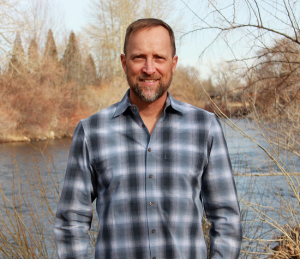Welcome!
I teach a form of Buddhist mindfulness meditation known as “Shamatha,” a Sanskrit word meaning “calm abiding”, which consists of shifting the mind’s attention from its habitual and wandering thought patterns to the breath. The core intention of the practice is to simply, calmly and gently abide with the breath as it progresses according to its own natural rhythm.
“In meditation, rather than allowing your mind to be thoughtlessly absorbed in thought, you purposely place it elsewhere.” — Susan Piver from Start Here Now: An Open-Hearted Guide to the Path and Practice of Meditation
Approach
The process of learning and practicing meditation is also known as “training the mind” in that, over time, we are strengthening our ability to place our mind’s attention wherever we choose through the regular practice of focusing on the breath. Just as we may go to a gym to train our bodies, we can train our minds following the same steps taken to help establish a sustainable and beneficial physical fitness routine: learning techniques, training with others and receiving coaching.
And so, in that spirit, my approach consists of:
offering certified meditation instructor-led training,
providing opportunities to practice with others,
and helping fine-tune key aspects of the practice.
Rationale
You might ask, “why meditate?” Rick Hanson, Ph.D., in his book, Buddha’s Brain emphasizes the importance of “being on our own side” when it comes to allowing ourselves to engage in mindfulness practices like meditation. Here’s how he makes the case for being on our own side:
- “You are a human being like any other – and just as deserving of happiness, love and wisdom.”
- “Nurturing your own development isn’t selfish. It’s actually a great gift to other people.”
Benefits
While scientific research and personal experiences have shown a great number of benefits that might be reaped from practicing meditation, how any one person may benefit varies. Here is a partial list of areas of our bodies, minds and attitudes/behaviors that can be positively impacted:
| Body | Mind |
|
|
| Attitudes and Behaviors | |
|
|
Founder

I first attended a meditation training at the age of ten, but didn’t remember much as I slept through most of the training sessions. My next exposure was not until the early 90’s at a Silicon Valley workplace training. I meditated intermittently from then until 2008 when I became a regular practitioner following the passing of my stepmother, Fianna. I had begun to practice meditation with her before she passed, and ended up inheriting her library of mindfulness- and Buddhist-based books, many of which were instrumental in the development of my meditation practice and belief in its transformative potential.
In 2015, I began to seriously consider learning to teach meditation, then in late 2016 I heard Susan Piver, Founder of the Open Heart Project (OHP), give her opening talk for the “Science of Meditation Summit.” I went on to successfully complete the OHP’s Meditation Instructor Certification program in the winter of 2017 and have launched a teaching practice, as well as continue to work on my own personal meditation practice. I also co-founded and helped lead the OHP’s Meditation Instructor Group composed of course alumni who practice together, discuss readings, and provide support for each other on a weekly basis.
One of my core aims is to transmit the technique of Shamatha meditation to my students as it was transmitted to me by my teacher Susan, to Susan by her teacher, to her teacher by his teacher, and so on, going back literally for centuries. I believe that the value and effectiveness of this ancient practice lies in its distilled simplicity and intend to fully maintain its integrity as I transmit the teaching to others.

